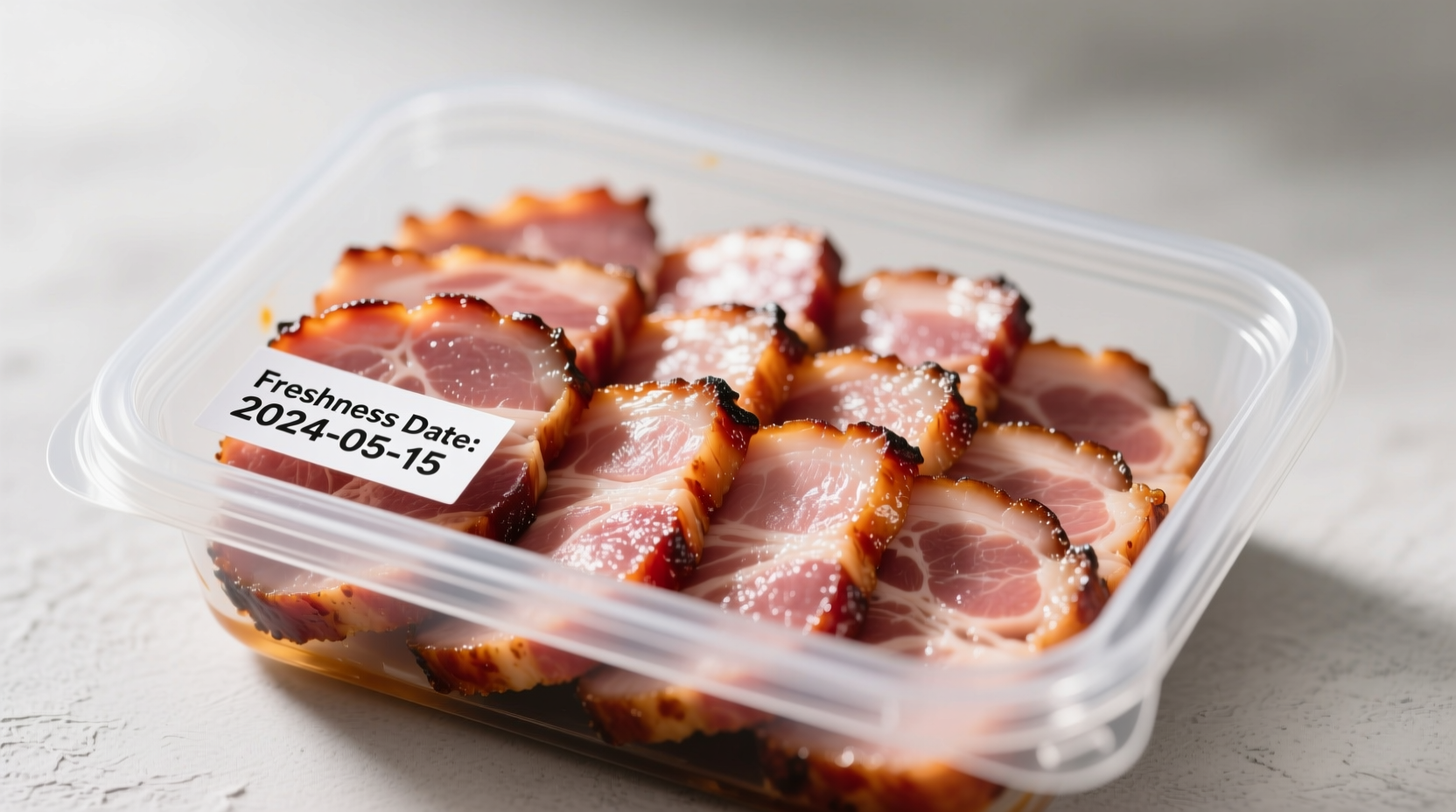Cooked gammon lasts 3-4 days in the refrigerator when stored properly at 40°F (4°C) or below. This timeframe applies to both store-bought and homemade preparations, ensuring food safety while maintaining quality.
Wondering if that leftover gammon from Sunday's roast is still safe to eat? You're not alone. Proper food storage is crucial for preventing waste while keeping your family safe from foodborne illness. Let's explore exactly how to handle cooked gammon after your meal, with guidance from food safety experts.
Understanding Cooked Gammon Refrigeration Guidelines
When stored correctly, cooked gammon maintains both safety and quality for a limited window. The UK Food Standards Agency and USDA Food Safety and Inspection Service agree on these critical storage parameters:
| Storage Condition | Maximum Duration | Quality Notes |
|---|---|---|
| Refrigerator (40°F/4°C or below) | 3-4 days | Best quality maintained; discard after 4 days |
| Airtight container | 4 days | Prevents moisture loss and odor absorption |
| Wrapped in foil/plastic wrap | 2-3 days | Less effective than airtight containers |
| Freezer (0°F/-18°C) | 1-2 months | Safe indefinitely but quality declines after 2 months |
Temperature control proves critical for food safety. Your refrigerator should maintain a consistent temperature at or below 40°F (4°C), with the coldest section typically found at the back, not in the door where temperatures fluctuate most.
Proper Storage Techniques for Maximum Freshness
How you store cooked gammon directly impacts both its safety and quality. Follow these professional kitchen-tested methods:
- Cool quickly - Divide large portions into smaller containers to cool faster (within 2 hours of cooking)
- Airtight is essential - Use containers with tight-fitting lids or vacuum-sealed bags
- Label everything - Include both storage date and "use by" date (3 days from cooking)
- Store separately - Keep away from raw meats to prevent cross-contamination
Professional chefs consistently emphasize that improper cooling represents the most common storage mistake home cooks make. Leaving gammon at room temperature for more than two hours creates ideal conditions for bacterial growth.

Recognizing When Cooked Gammon Has Spoiled
Don't rely solely on the calendar - your senses provide crucial safety information. Discard cooked gammon immediately if you notice any of these spoilage indicators:
- Visual changes - Grayish color, slimy film, or unusual mold growth
- Odor changes - Sour, ammonia-like, or generally "off" smell (fresh gammon has a mild, savory aroma)
- Texture changes - Slimy or sticky surface that wasn't present when stored
- Taste test - If it tastes sour or unpleasant (though never taste suspicious food)
The Food Standards Agency reports that visual and smell indicators prove 95% reliable for detecting spoilage in cooked meats when combined with proper time tracking. When in doubt, throw it out - foodborne illness isn't worth the risk.
Extending Gammon's Usable Life: Freezing and Reheating
When you can't finish your gammon within 3-4 days, freezing provides a safe alternative:
- Portion before freezing - Divide into meal-sized portions for convenient thawing
- Vacuum sealing - Removes air that causes freezer burn and extends quality
- Thaw safely - In refrigerator (24 hours), cold water bath (30 minutes), or microwave (immediate cooking)
- Reheat properly - To 165°F (74°C) internal temperature when serving
For optimal texture after freezing, add a splash of broth or water when reheating. This prevents the gammon from drying out during the second cooking process.
Food Safety Context: Why These Timelines Matter
Understanding the science behind these storage guidelines helps you make informed decisions. Cooked gammon enters the "danger zone" (40-140°F/4-60°C) where bacteria multiply rapidly. The 3-4 day refrigerator limit accounts for:
- Natural bacterial growth even at proper temperatures
- Quality degradation that affects taste and texture
- Margin of safety for potential temperature fluctuations
According to the NHS Food Safety Guidelines, approximately 8.1 million cases of food poisoning occur annually in the UK, with improperly stored cooked meats representing a significant contributor. Following these simple storage practices dramatically reduces your risk.
Practical Applications: Using Leftover Gammon
Maximize your cooked gammon before it reaches its storage limit with these chef-recommended ideas:
- Day 1-2: Serve as planned with traditional sides
- Day 2-3: Chop for sandwiches, salads, or quiches
- Day 3-4: Dice for fried rice, pasta dishes, or frittatas
Professional kitchens follow a "first in, first out" system to ensure older ingredients get used before fresher ones. Implement this same system at home by placing newer containers behind older ones in your refrigerator.











 浙公网安备
33010002000092号
浙公网安备
33010002000092号 浙B2-20120091-4
浙B2-20120091-4